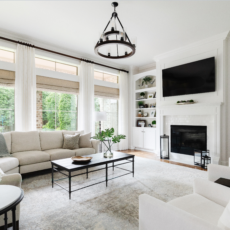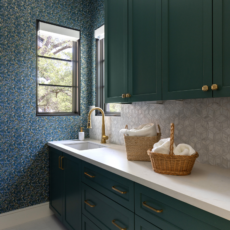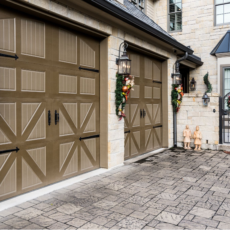Our Houston Interior Designers Define the Transitional Design Style
Interior design trends are ever-changing, so how do we ensure our homes stay timeless? The answer lies in balancing the tried and true traditional with the bold and innovative contemporary. Among the myriad of current styles, transitional design has emerged as a popular choice for those seeking a balanced and timeless aesthetic—combining old and new style elements. But what exactly is transitional design? In this comprehensive guide, we will dive into the core principles of transitional design, explore its origins, and provide practical tips on incorporating this style into your living spaces.
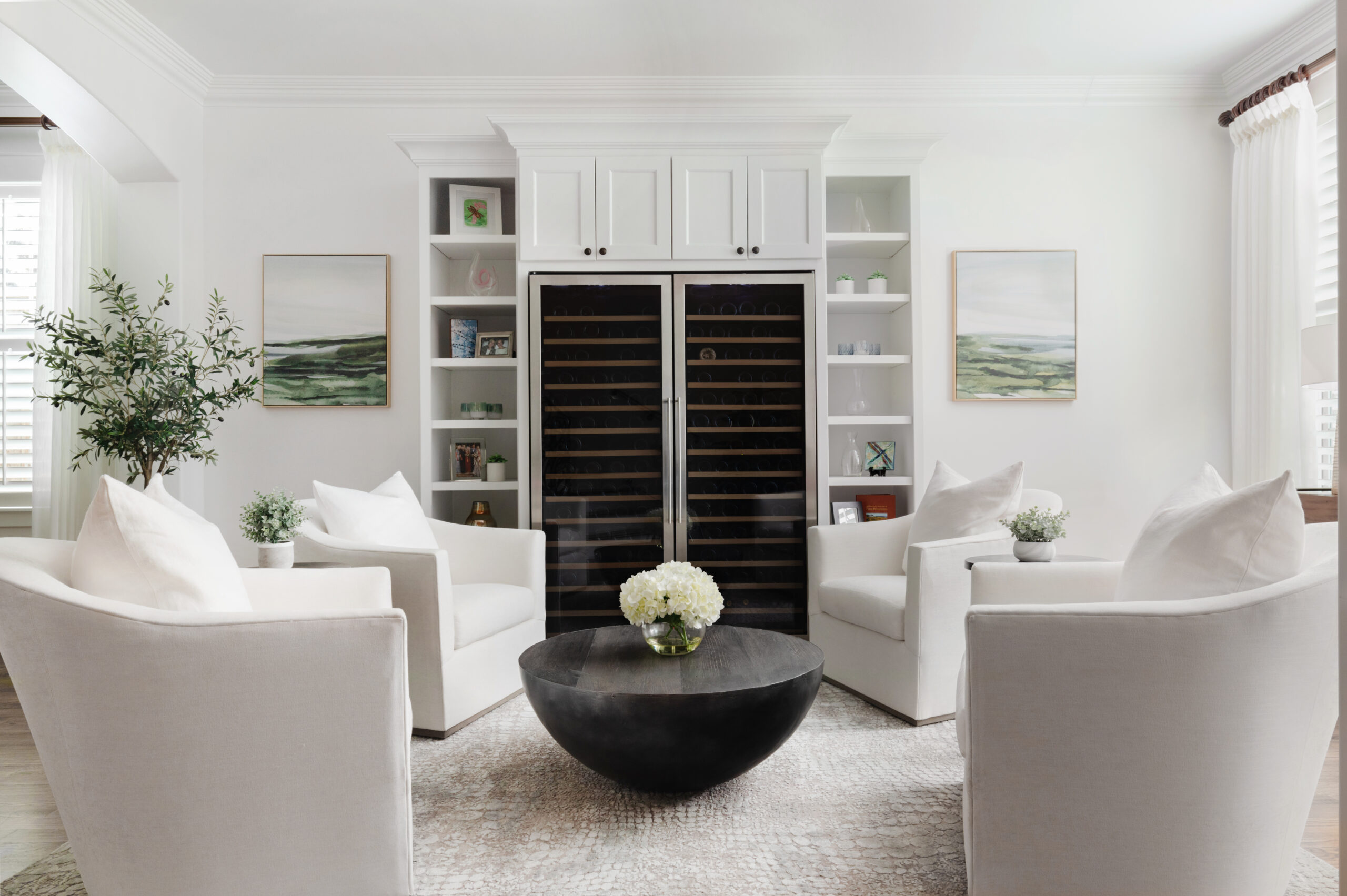
Defining Transitional Design
Transitional design is often described as the “middle ground” between traditional and contemporary styles. We like to take a transitional design for some of our clients because it doesn’t lean too heavily into one design type. For couples with opposing styles, this could be the ultimate compromise! This design approach blends the classic, enduring elements of traditional design with the clean, minimalist features of contemporary design. Blending the two popular design styles allows the home to evolve more easily over time rather than being siloed into one style that may fade out. This fusion creates a sophisticated yet approachable space that feels timeless and fresh.
The Origins of Transitional Design
To fully appreciate transitional design, it’s important to understand its origins. The style emerged in the early 21st century as a response to the starkness of contemporary design and the sometimes overly decorated nature of traditional design. Homeowners and designers alike were seeking a style that offered the best of both worlds—a look that was elegant yet accessible, modern yet rooted in classic design principles.
Transitional design drew inspiration from various movements, including the Arts and Crafts movement, which emphasized handcrafted quality and simple forms, and Mid-Century Modern design, known for its clean lines and functional beauty. By merging these influences, transitional design created spaces that were tasteful and liveable.
Core Design Principles of the Transitional Style
Before we start planning and implementing a transitional design style, it’s essential to understand its core principles. So, what makes transitional design “transitional”? These guiding concepts will show us how to create a space that embodies the best of both traditional and contemporary design. With transitional design, you really can have it all!
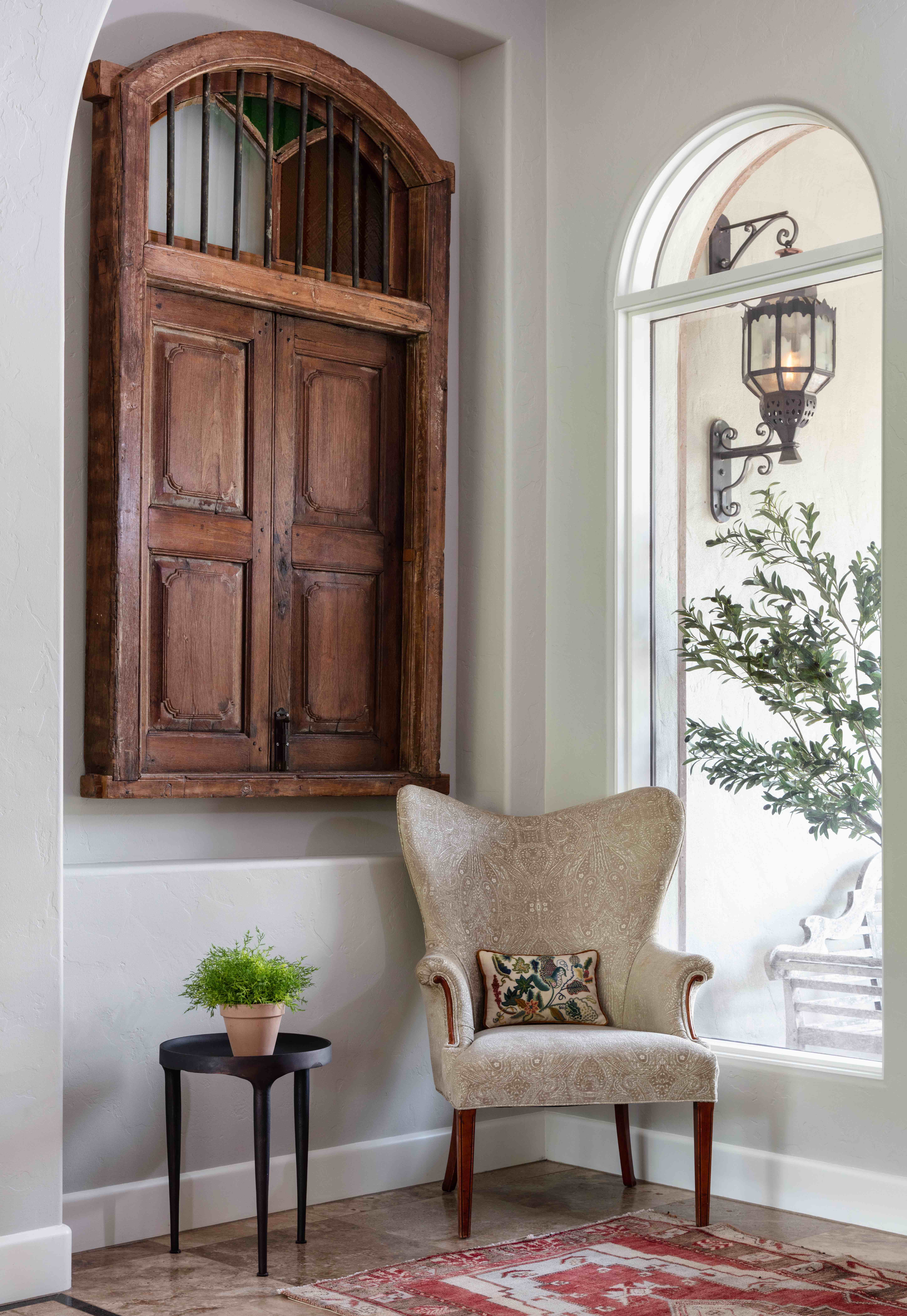
Simplicity and Sophistication
Transitional design is all about simplicity paired with sophistication. The style avoids overly complicated or fussy elements in favor of clean, streamlined forms. Furniture is often straightforward, with subtle details that add a touch of elegance or flavor. For example, a transitional sofa might feature clean lines but be upholstered in a luxurious fabric, balancing form and function.
With transitional design (and many other design styles), less is more. Sprinkle in accents here and there as you plan your furniture and decor purchases. If there are too many elements of uniqueness, it may come across as chaotic or messy. Start with a few focal pieces and add more as you go.
Timelessness
One of the defining characteristics of transitional design is its timeless appeal. By combining elements from different design eras, transitional spaces avoid looking dated or overly trendy. Instead, they maintain a classic, enduring quality that feels relevant year after year. This timelessness makes transitional design an excellent choice for those who want to invest in their home’s aesthetic without worrying about it going out of style.
If you plan to stay in your home through your elder years, this style is a great way to ensure that your home’s decor won’t need constant updating. We highly recommend leaning into transitional design for those who plan on aging in place.
Attention to Scale and Proportion
In transitional design, getting the scale and proportion right is crucial. Furniture and accessories should be carefully chosen to fit the space without overwhelming it. This means selecting pieces that are appropriately sized for the room and arranging them in a way that feels balanced. For example, a large sofa might be paired with a more delicate coffee table to create visual harmony. Scroll through our Instagram to see the furniture we select for different types of spaces.
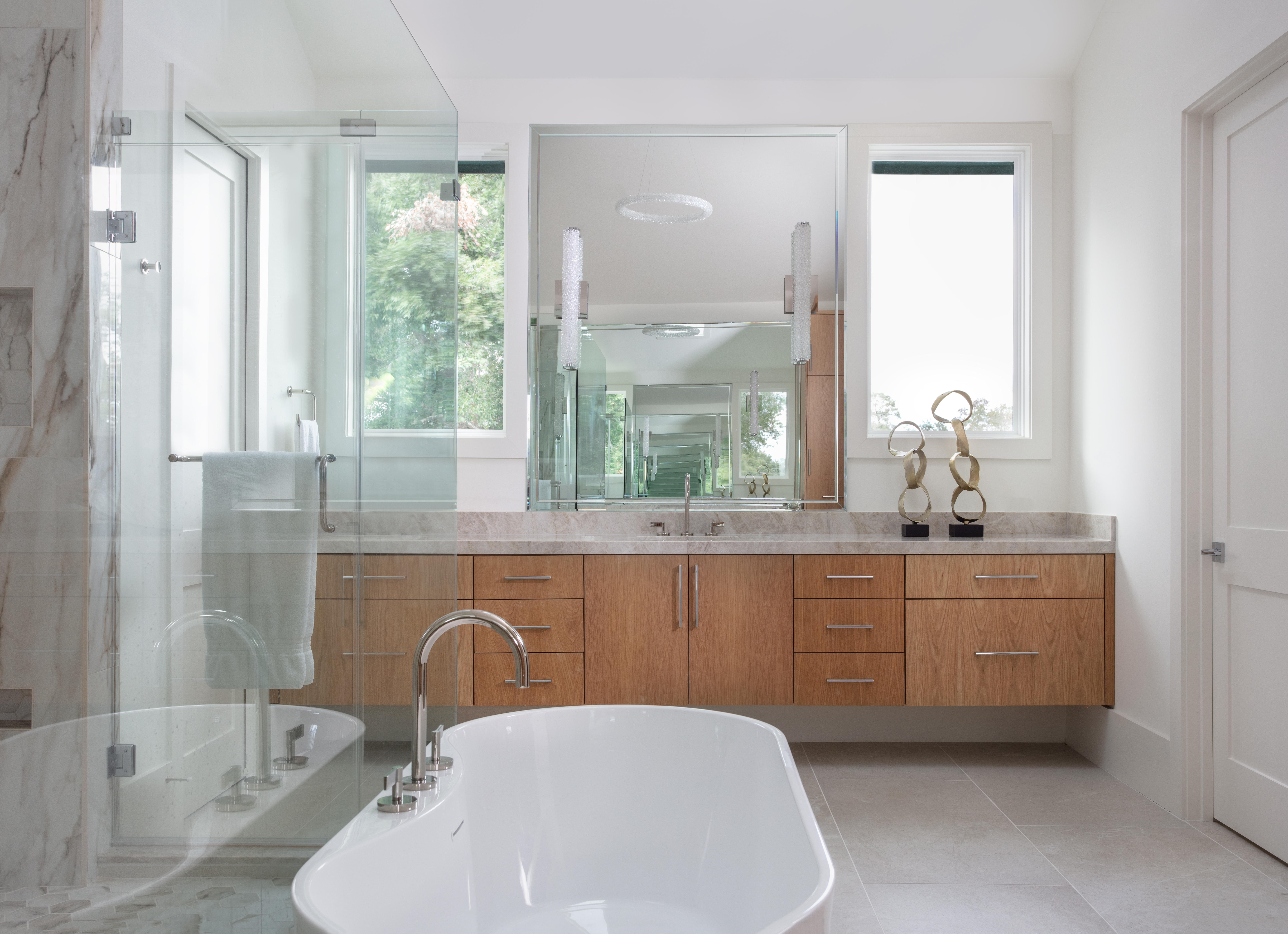
Incorporating Modern and Traditional Elements
The essence of transitional design lies in its ability to seamlessly blend modern and traditional elements. This might mean pairing a classic wingback chair with a sleek, modern coffee table or placing an antique mirror above a contemporary console. The key is to find a balance between the two styles so that neither dominates the space.
We love to blend the old with the new when designing for our clients. It’s such a great way to add personality to the home. When our clients have furniture that has been in their families for generations, we like to get creative and see how we can make those pieces a centerpiece backed by current design trends.
Design Elements of the Transitional Style
With the guiding principles in place, you can move forward by selecting the design elements and finishes that will complete your transitional design scheme.
Neutral Color Palette
The base of any great transitional design is often a neutral color palette featuring shades like beige, gray, taupe, and cream. These colors serve as a backdrop, allowing furniture and accessories to take center stage without overwhelming the space. If you want to add color to your home, it can be done tastefully. Our team at Pamela Hope Designs likes to sprinkle in color with accent walls, wallpaper, wall art, decorative pillows, and throw blankets. We recommend starting with minimal color and adding more as you grow into your home.
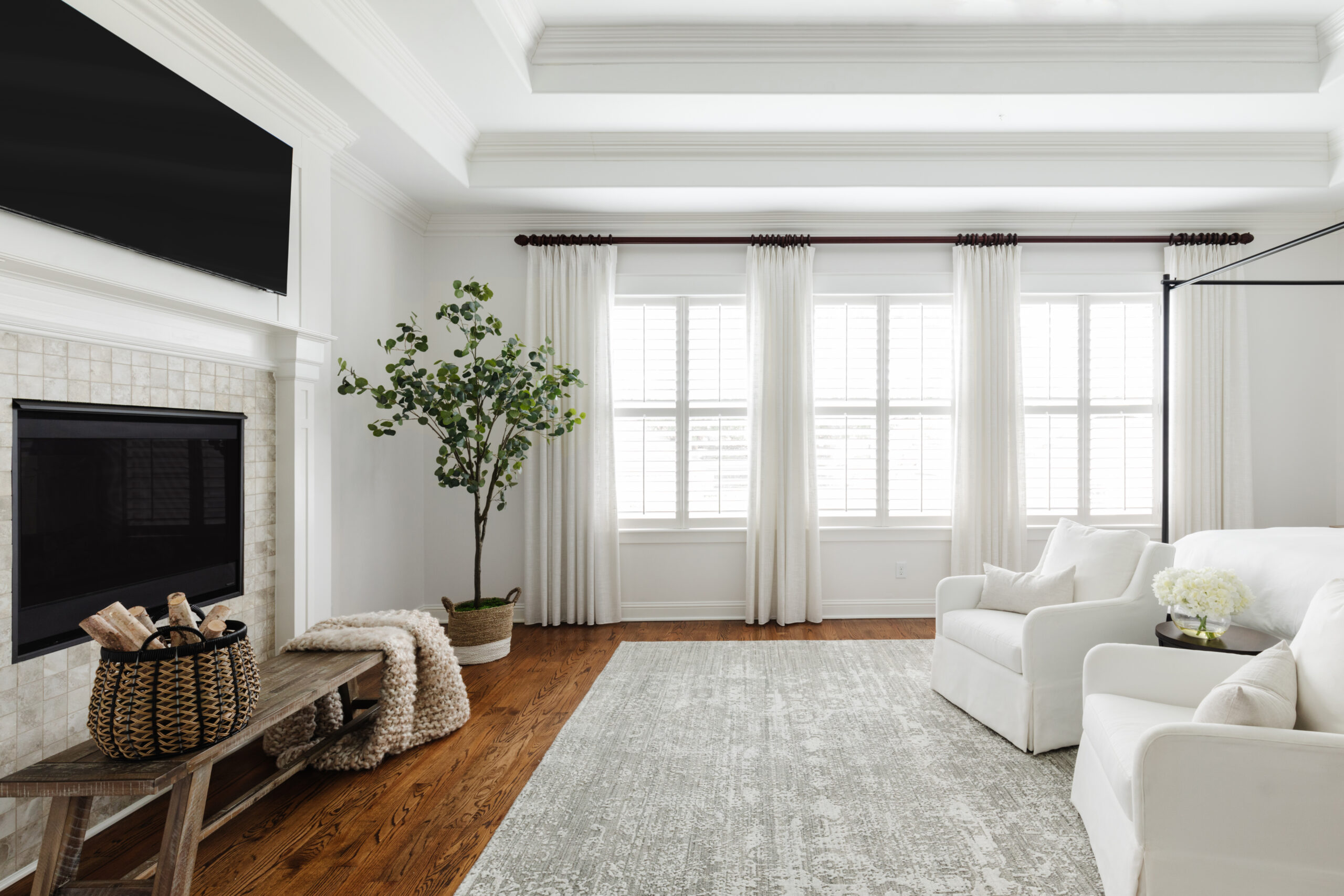
Layered Textures
While the color palette in transitional design tends to be neutral, using varied textures elevates the space from feeling flat or one-dimensional. Layering different materials, such as a patterned rug, a smooth leather chair, and a polished metal lamp, adds depth and visual interest to the room. This approach allows for a more dynamic and engaging space without relying on bold colors or patterns.
Balanced Proportions
Balance is key in transitional design. This approach harmonizes traditional elements, such as curved furniture and ornate details, contrasted with the sleek, straight lines of contemporary design. This balance creates a sense of calm and order. Whether you’re a minimalist or a maximalist, this hybrid design style can be molded to meet your taste in the middle.
Mix of Materials
Transitional spaces often incorporate materials like wood, glass, metal, and fabric. This mix adds texture and interest to the space while maintaining a cohesive look. We like to play with texture while working in a monochromatic space. With texture, we can bring depth and character to a space while maintaining a highly neutral color scheme. Many would associate this type of look with the current quiet luxury trend.
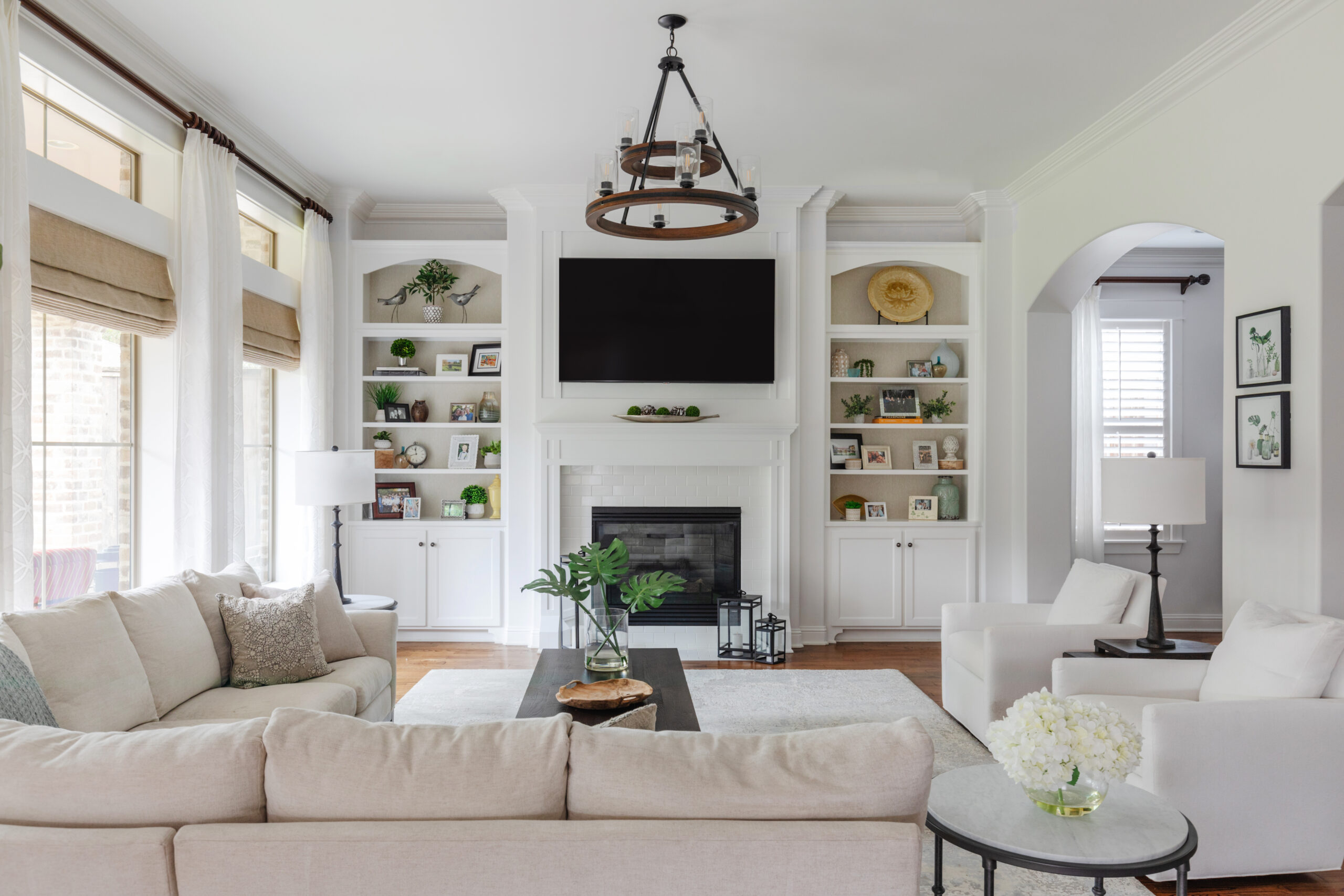
Minimal Ornamentation
Less is more when it comes to transitional design. While traditional designs might include elaborate decorations, transitional designs are more toned down and restrained. Ornamentation is kept to a minimum, focusing instead on quality and craftsmanship.
If you’ve been following us for a while, you’ll likely notice that we tend to display decor through open shelving. We love to create spaces in the home where our clients can showcase who they are and what they love. Open shelving allows our clients to cycle through decor and update their displays as they please. It’s a great way to incorporate this ornamentation element into your home and adapt it to your taste as it evolves throughout your lifetime.
Comfort and Functionality
The transitional design style prioritizes comfort and functionality. Furniture is often plush and inviting, making spaces feel cozy and lived-in rather than cold or impersonal. When planning for comfort and functionality, we advise our clients to think about their outdoor spaces, too. How can you carry this inviting and comfortable feel into your outdoor entertaining spaces? We design with indoor and outdoor fluidity in mind, especially given how many months of the year we can utilize those outdoor spaces here in Houston!
How to Bring Transitional Design into Your Home
Now that you have a more rounded understanding of what transitional design is, let’s explore how you can incorporate this style into your own home! Whether you’re redecorating an entire house or updating a single room, our team’s tips will help you achieve that desired transitional look.
Start with a Neutral Foundation
The first step in creating a transitional space is establishing a neutral foundation. This typically involves choosing a color palette of soft, muted tones. Walls are often painted in shades of white, gray, or beige, providing a versatile backdrop that can be easily updated with accessories and furniture.
Our Design Manager, Danna loves SW 7004 Snowbound from Sherwin Williams for a white that has very subtle cool undertones and works in many spaces. She’s used it inside and out with excellent results. For a warmer interior or a more traditional style, you might try SW 7551 Greek Villa. It’s also a bright white but with a creamier base.
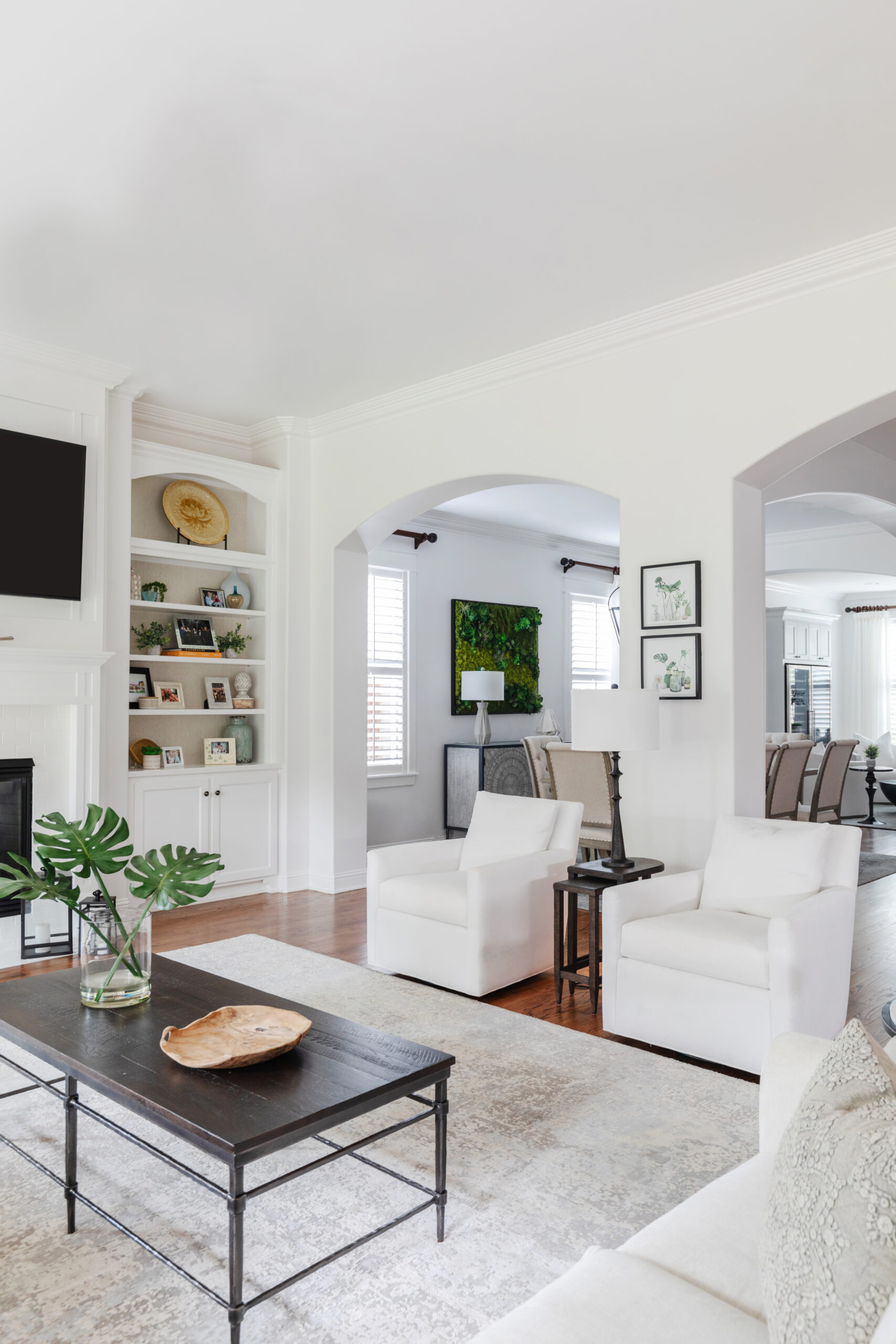
SW 7004 Snowbound
Neutral colors not only create a calming atmosphere but also allow for greater flexibility when decorating. You can introduce pops of color through artwork, pillows, or rugs without worrying about clashing with your overall design scheme.
Focus on Quality Over Quantity
We will keep saying it! With transitional design, less is often more. Instead of filling your space with numerous items, select a few high-quality pieces that make a statement. Invest in well-made furniture that combines comfort with style, and choose accessories that complement the overall aesthetic rather than distract from it.
For example, a well-crafted wooden dining table paired with upholstered chairs can be a focal point in a transitional dining room. Add a simple centerpiece and a few carefully chosen accessories, and you’ll have a space that feels both elegant and inviting.
Mix Materials Thoughtfully
One of the strengths of transitional design is its ability to mix different materials in a cohesive way. When selecting furniture and accessories, try incorporating a variety of textures and finishes. For example, you might pair a sleek metal lamp with a wooden side table or layer a plush rug over a hardwood floor.
When mixing materials, it’s important to maintain a sense of balance. Avoid combining too many contrasting textures, which can create a disjointed look. Instead, aim for a harmonious blend that enhances the overall design.
Embrace Minimalism
While transitional design is not as minimalist as contemporary design, it does share a similar appreciation for uncluttered spaces. To achieve a transitional look, it’s important to edit your decor carefully. Avoid overcrowding surfaces with knick-knacks or excessive accessories. Instead, choose a few meaningful pieces that enhance the design without overwhelming it.
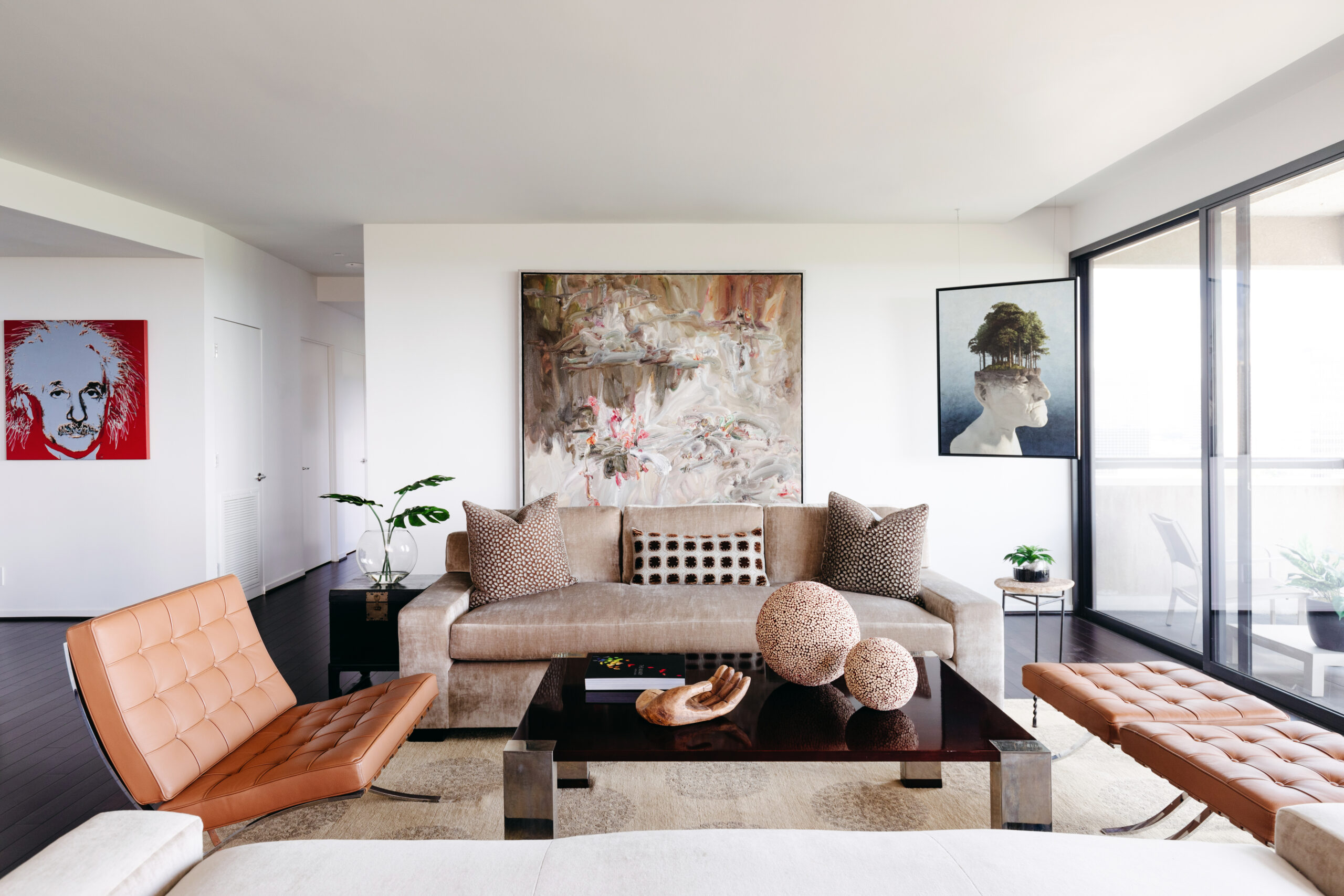
Remember, you can cycle these decor pieces out as seasons change and your preferences change! Start with less and keep things on rotation. This will help your home feel fresh and exciting more often.
For example, a simple vase with fresh flowers or a well-chosen piece of art can add personality to a room without feeling cluttered. The goal is to create a space that feels open, airy, and thoughtfully curated—with emphasis on “thoughtfully.”
Personalize Your Space
Finally, remember that transitional design, like any design style, should reflect your taste and lifestyle. While the style offers guidelines, there’s plenty of room for personalization. Whether it’s a family heirloom, a piece of art you love, or a collection of books, these personal touches will make your space feel uniquely yours.
We always advise our clients not to get too enthralled with the design trends. They can be fun and a good starting point for inspiration, but your home should ultimately reflect you! Don’t be afraid to let your interests, tastes, and personality shine through in your home.
Common Misconceptions About Transitional Design
As with any design style, several misconceptions about transitional design can lead to confusion. Let’s address some of the most common myths and set the record straight!
Transitional Design is Boring
Some people mistakenly believe transitional design is boring because it often features neutral colors and minimal ornamentation. However, this couldn’t be further from the truth. While transitional design prioritizes simplicity and balance, it also encourages creativity by carefully mixing styles, textures, and materials. The result is a space that is both visually interesting and aesthetically pleasing.
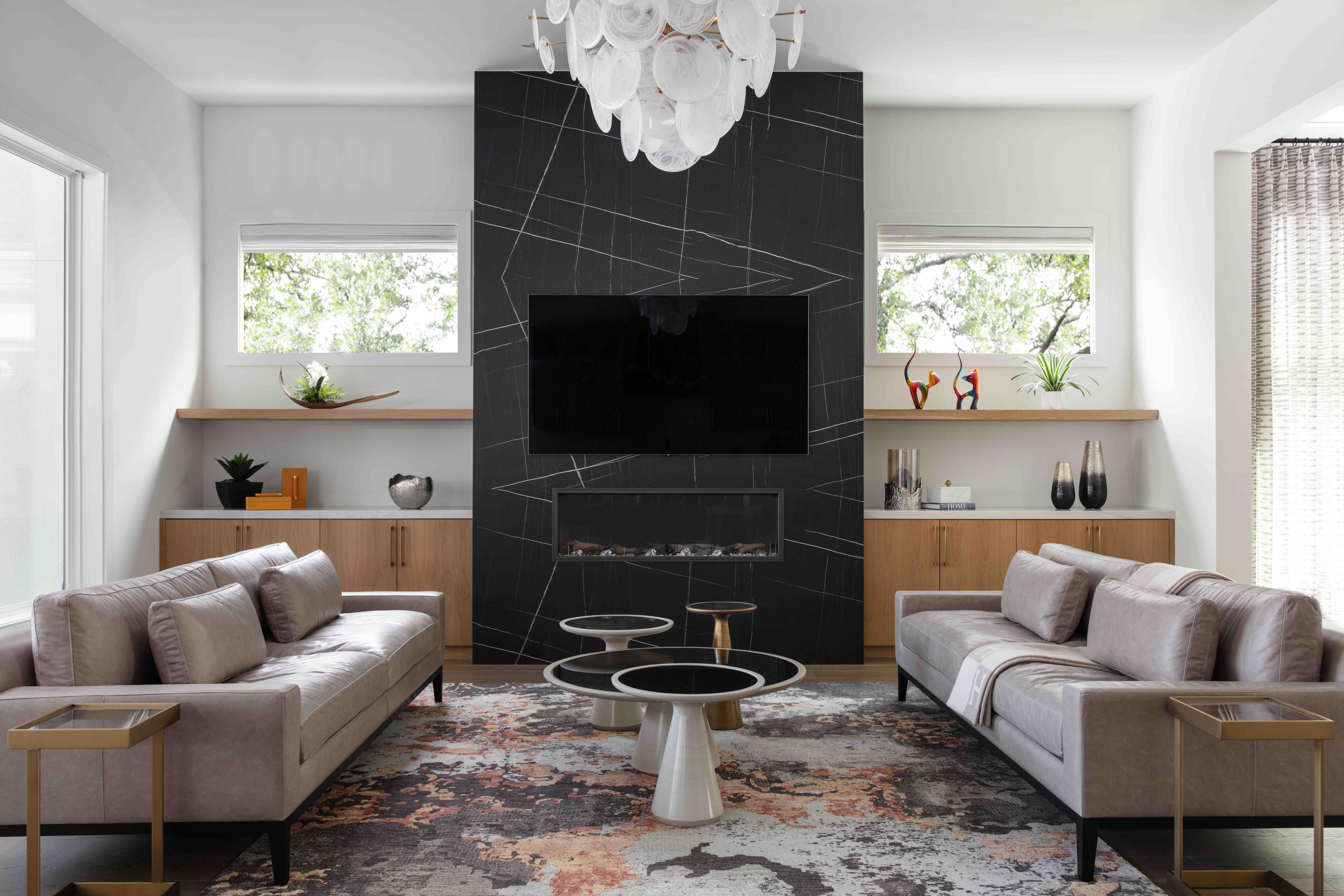
It’s Just Another Word for Traditional
While transitional design does incorporate traditional elements, it is not simply a rebranded version of traditional design. The key difference lies in how transitional design balances traditional forms with contemporary elements. This interior design blend creates a space that feels familiar and forward-thinking, making it distinct from traditional design. Transitional design allows us to meet in the middle and explore both aisles of traditional and contemporary design.
Transitional Design is Too Rigid
Another misconception is that transitional design is too rigid or formulaic. In reality, transitional design offers a great deal of flexibility. The style’s emphasis on balance and harmony allows for a wide range of interpretations, meaning you can tailor the design to suit your personal preferences while still adhering to the core principles.
As we stated earlier, you can really have fun with this design style. Take the foundation of transitional design and tailor it to your liking. Play with texture, color, and decor, and make your soul shine through in each section of your home. This style is meant to evolve with you, and that is hardly rigid to us.
What Transitional Design Can Look Like in Different Spaces
Transitional design can be applied to any room in your home, from the living room to the bedroom to the kitchen. Let’s explore how this versatile style can be adapted to different spaces.
Living Room
In a transitional living room, comfort and style go hand in hand. A neutral color palette provides the foundation, allowing for a mix of traditional and modern furniture. For example, you could combine a sleek contemporary sofa with a classic coffee table featuring carved wooden legs. Add a few plush throw pillows and a soft area rug to enhance comfort while maintaining the understated elegance of the space. Lighting should be both functional and stylish. You may consider pairing traditional lamps with more modern floor or table lamps for a layered lighting effect.
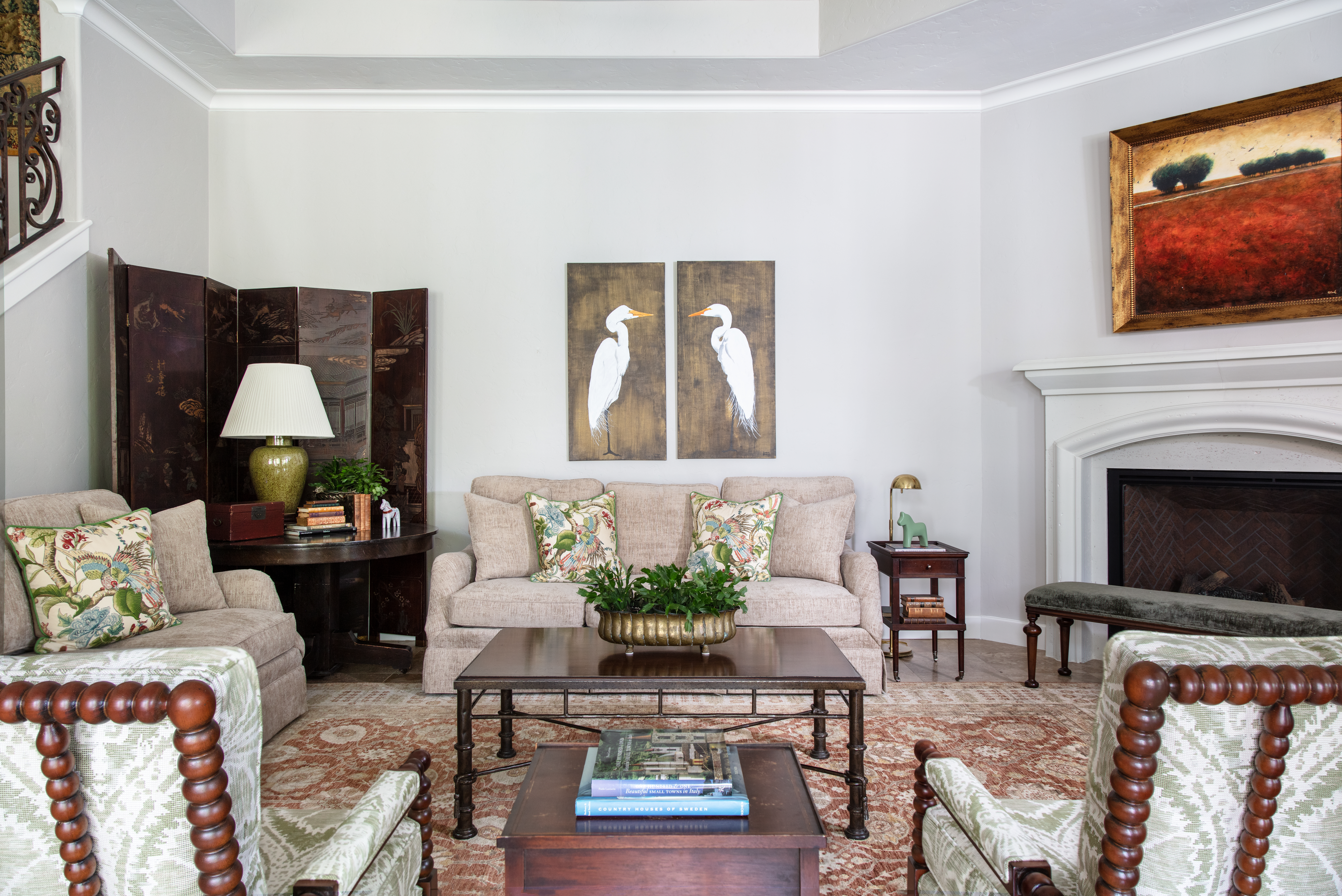
Bedroom
The bedroom is a great space to embrace transitional design’s focus on comfort and serenity. A neutral color scheme, such as soft grays, warm beiges, or a layering of all white, creates a relaxed atmosphere. A transitional bed frame might feature updated, clean lines of a traditional style such as a four-poster bed. Bedding should prioritize luxury and simplicity, using natural fabrics like cotton, linen, or velvet in understated patterns or solid colors. Incorporate a mix of modern and traditional bedside tables, lamps, or even artwork or mirrors flanking the bed to balance both styles.
When it comes to storage, transitional dressers, and wardrobes often have classic shapes but are finished with modern hardware for a fresh touch. A well-placed mirror in a simple frame can add both functionality and elegance, enhancing the room’s sense of space and light.
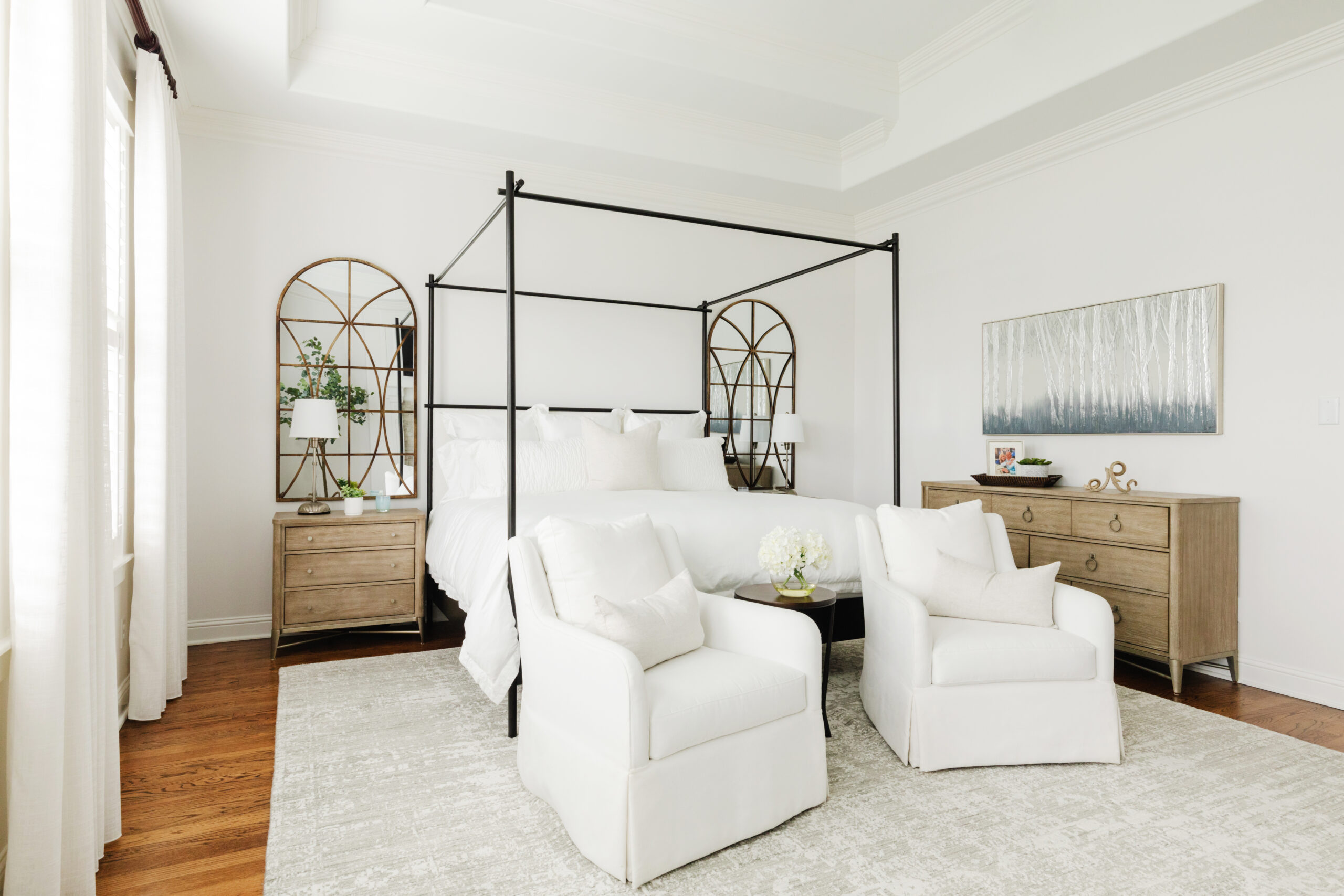
Kitchen
Functionality is key in a transitional kitchen (and with any kitchen), but there’s plenty of room for style. The cabinetry might have traditional raised-panel doors but in a sleek, modern color like matte black or soft gray. Countertops made from natural materials such as marble or granite blend beautifully with more contemporary elements like stainless steel appliances. Backsplashes are often understated, using classic subway tiles in a neutral color to create a clean and timeless look.
Backsplashes, though, can be a great place to experiment. Maybe you want to use a tile with a minimal yet interesting pattern. Or perhaps you found tiles from a recent trip that complement your kitchen nicely. Elements like this elevate your design while emphasizing who you are in your home.
Lighting in the kitchen plays a critical role in setting the transitional tone. Pendant lights above the island can feature modern lines, while a more traditional chandelier above the dining table might be your element of classic elegance. Open shelving, a feature common here at Pamela Hope Designs, can be balanced with more traditional closed cabinets, offering both display space and storage.
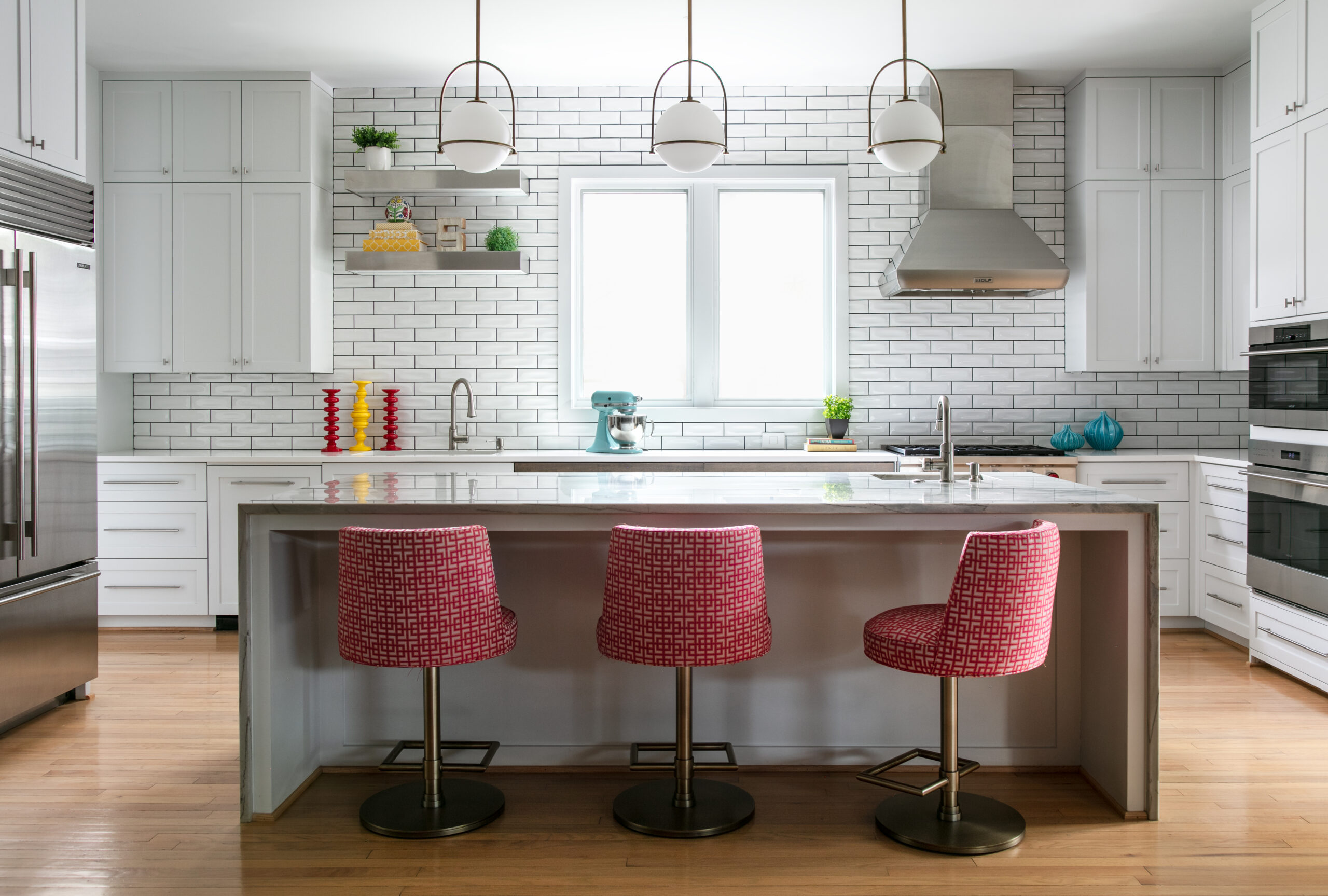
Bathroom
A transitional bathroom strikes a balance between traditional elegance and modern simplicity. Classic elements like marble countertops and pedestal sinks can be paired with sleek chrome fixtures and frameless glass shower enclosures. The color scheme remains neutral, often with light tones that evoke a sense of cleanliness, modernity, and serenity.
Vanities in a transitional bathroom may feature traditional cabinet designs but with more modern hardware and finishes. For example, a classic white vanity with modern brass or matte black drawer pulls creates a simple blend of styles. Mirrors with traditional framing can complement minimalist lighting, such as simple sconces or recessed lighting, to balance old and new.
Dining Room
A transitional dining room often features a mix of materials and design elements that create a sophisticated yet inviting atmosphere. A traditional wooden dining table, perhaps with turned legs, can be paired with more modern chairs upholstered in sleek fabrics or even leather. The neutral palette in the dining room can be enhanced with subtle accents in lighting fixtures or table settings that introduce metallic or glass elements for a more contemporary feel.
Artwork and accessories should be chosen carefully to balance the room. A large, abstract painting might be placed above a more classic buffet or sideboard, while simple centerpieces, such as candles or greenery, keep the table uncluttered and elegant. The lighting fixture above the dining table is often a focal point. How can you best illuminate your dining room?
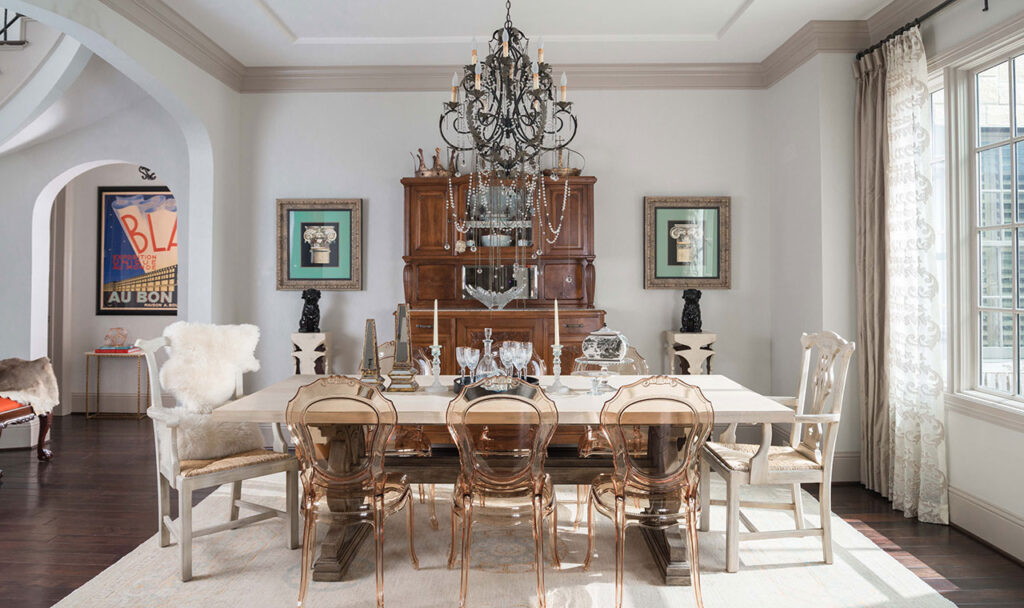
A Reflection on Transitional Design
Transitional design offers all of us the unique opportunity to create spaces that are both timeless and modern, elegant yet comfortable. By blending the best elements of traditional and contemporary design, this style creates a harmonious balance that feels welcoming and sophisticated without being overwhelming. Whether furnishing a new home or updating an existing space, transitional design provides a versatile and adaptable framework that can evolve with your personal tastes and lifestyle.
Transitional design is more than just a compromise between two styles; it is a thoughtful blend that celebrates the best of both worlds. It provides a design solution for those who appreciate the past but embrace the present, offering a versatile, elegant, and livable space for years.
We look forward to seeing your transitional design interpretations! Be sure to tag us on Instagram if you’re in the renovation process. Or, if you need some inspiration, give us a call, and we’ll help you find it.

Meet Pamela, A Luxury Interior Designer in Houston
Pamela O’Brien is the founder of Pamela Hope Designs in Houston, Texas. Pamela is an award-winning luxury interior designer, writer, and speaker. Prior to founding Pamela Hope Designs, Pamela served as a spokesperson in media and public affairs, working with media outlets like Dateline NBC and 48 Hours. This experience allowed her to travel the world and furthered her love for travel, culture, and interior design. After attending an executive course at the Harvard Graduate School of Design, Pamela launched her own interior design firm full-time. Pamela is known for building strong relationships with her clients, who later become friends and collaborators. She is highly influential in the Houston interior design space and shows no signs of slowing down.
Meet the Rest of Our Houston Interior Design Team

